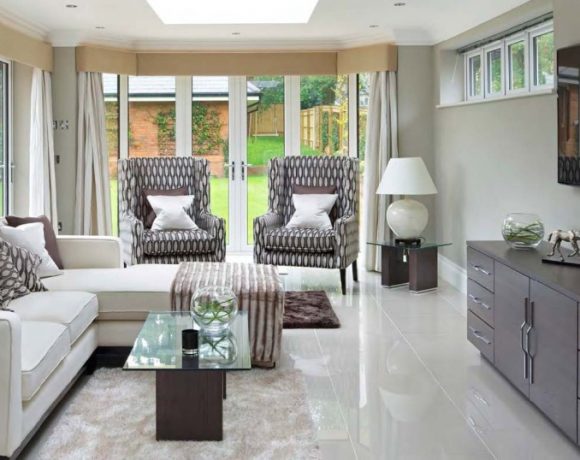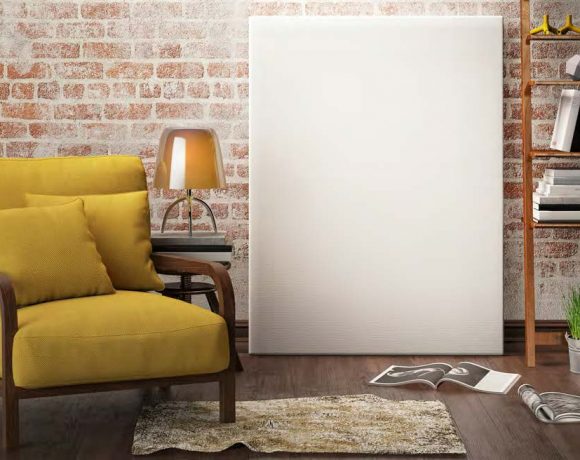The start of a new year always brings the opportunity for introspection and review. Beyond the regular New Year goals of extra exercise and better eating—which are rapidly abandoned due to the lack of excitement inherent in extra carrots and reps of burpees—there is real value in looking at your business and trying to see how you can keep your service relevant and attractive to your customers.
There has been a radical change to the art gallery and picture framing business over the last 15-20 years. The purchasing patterns and expectations of the modern consumer make it a completely different animal. If you have been conducting business over this time frame this is not news to you. First there were entire television networks dedicated to showing the average homeowner how completely unnecessary it was to hire skilled tradespeople. Why pay all that extra money when you can do it yourself?
DIY—A Detriment to Custom Framing?
Interior decorators show people how to buy IKEA frames, pull out the glue gun and assemble their
own art for a fraction of the cost. Decorating magazines reiterate the same monotonous litany and display most of the art in their interiors without any framing at all. Canvas art gets hung raw and naked with all its edges on display. Interior design media encouraged an attitude less concerned with how beautifully art could be displayed on a wall. All that mattered was getting it up in the most economical manner possible.

I worked for years in a “do it yourself” frameshop. The owner, we’ll call him “Jim,” was a completely charming alcoholic who took great pride in the fact that he had spent most of his adult life “putting four pieces of wood together.” The fact is that the frame assembly is the least of what a picture framer does. I remember Jim with a great deal of fondness—and a lot of head-shaking! I will continue to write about Jim whenever I need an example of what not to do.
I and my fellow coworkers would often come into the shop in the morning to find posters covered in bloody fingerprints because Jim had handled art unaware that he’d cut himself on the edge of a piece of glass or given himself a paper cut on some cardboard backing. We all got really good at fixing
things with hydrogen peroxide!
Customer Education is Everything
A good picture framer, like a doctor, should have the ultimate goal of doing no harm. That makes a good picture framer into a conservator. Knowing what NOT to do is every bit as important as knowing what to do. For example, as an industry, we are fully aware of the importance of acid-free materials as a protective agent for artwork. If we are to expect our customers to pay the additional cost for these premium materials, we need to explain their value.
Acid-free protection is a necessary step in the picture-framing process. If it’s done right you will only have to do it once. Acid-free mats and backing, UV glass, museum glass, proper hinging, spacers…whether hidden or obvious to the naked eye, once conservation materials are explained, they reinforce your role as trusted advisor and caretaker.
Beware the Glue Gun!
When working with valuable artwork it is very important not to do anything that can’t be undone without destroying the art’s value. The customer needs to know why the glue gun is not their friend. The “just get it up on the wall” market has been cornered by the big box store. They are experts in turning interior design into disposable fashion. The trend that started out as a beautiful African brown/black hardwood veneer called “wenge” has been degraded and polystyrene-ed into everything under the sun and labelled “espresso finish” (aka brown, ugh).
This is the new reality in the interior design industry. It seems less important where a trend starts than how to cheapen and replicate it until whatever made it beautiful in the first place has been completely obliterated. This is the opposite of finely designed custom framing. With all the design work invested by the better picture frame importers and manufacturers to fabricate elegant profiles and utilize glorious wood veneers, why would you, the professional picture framer, produce work that’s indistinguishable from what can be purchased ready-made?

Unleash Your Inner Avant-Garde Genius
The finishes that are available now—gold or silver leaf, modernized barn board, lacquer, frosted metallic leaf, graphite—are completely overwhelming. The range of frame profile and finishes are virtually limitless. So how do you dive in? Use fine materials, but also utilize them in a way that is visibly superior. The design aspect of this process cannot be overstated. Imagination and vision are key. Stacking frames to create truly custom combinations isn’t a new concept but it’s one that seems to be oddly under-utilized.
Playing with spacers in shadowboxes and between mats to emphasize the perception of depth within the volume of the framing is also not groundbreaking but adds to the design impact of modern art. Use offsetting in your mat proportions to exaggerate the verticality or horizontal sprawl of art that otherwise would have awkward proportions in the awaiting space. Why just use a safe black cube frame when you can use a black frame with a stunning profile, lacquer finish, or super deep rabbit that transforms the safety of black frame/white mat into avant-garde genius?
Yes, it is probably easier to sell predictable, safe framing to your customers. But the extra effort expended to supply creative design options to your customers will be rewarded with a solid loyal customer base who will love to tell their admiring friends where they framed that jaw-droppingly beautiful piece hanging in their front hall.
Allowing yourself to be the expert that your customers can rely on should be your goal. This expertise will be the cornerstone of a thriving, expanding customer base. Know your materials and contribute the design flair that will have your clients leaving your store confident that their hard-earned dollars were well spent. Letting your work express the passion you feel for your craft will be good for you too. It’s a resolution that shouldn’t be too hard to keep.
Tara Crichton has worked in the framing industry for more than 24 years and is a graduate of University of Guelph with a double major in fine arts. She started out working in the framing industry to pay her way through school and never left the industry, for it was her calling. She has worked in every aspect of the industry from retail, to wholesale distribution, OEM and art direction. Tara now owns and operates a gallery just north of Toronto, Canada.










Maria Cecilia Teixeira
26 May
Dear
Tara Crichton
We are pleased to introduce ourselves to the prestigious magazine, since we are physically present in Singapore, with adjustable mezzanines, fully conformable to the consumer space.
We have a completely new product, using our unique telescopic system to suit any space in height, width and length. And the consumer can install it by their own, since the installation is very simple. We already have a store in Singapore , which ensures the immediacy of delivery from our product.
MEZZANINES TECROSTAR FIT YOUR SPACE
Innovation is present in every Tecrostar product, flexible and ideal for use in any space solution. The company, in spite of young, is the only owner of the patents of the full range of its products.
It is a family of flexible and extensible products, besides fully adaptable to the consumer space. There are several types of stairs, or railings, which are combined together, to make it easier, even customize their structures to suit the client.
Variable in height, length and width, the Tecrostar mezzanines are available in steel or wood. Very robust, despite being the “little” of the family, the loft T8 is indicated for use in confined spaces. Super versatile, you can have a surface of 3 to 8m2, and support up to 600 kg/m2. Ideal for an extra bedroom, or a workstation.
According to Tecro´s director, Mr. Daniel Tecedor, the unique telescopic system of its products ensures a simple installation, fast and clean, accessible even to beginners in DIY. Although the company is placed in Spain, all its products meet the highest European quality standards, and can be purchased directly through their website in English: http://www.tecrostar.com
Complete Tecrostar kits are:
. T8 and extensible TW8 – 3 to 8m2; bears a load between 200 and 600 kg/m2; Is indicated for use in confined spaces. Wooden also available.
. T15 and TW15 – ranging from 5 to 15m2, wooden also available.
Supports a load from 200kg/m2, up to 600kg/m2. It is recommended for those who want an additional bedroom, living room, or garage, for example.
. T30 – expandable from 14 to 30m2; supports from 200 up 800Kg/m2. Is wider and requires more time to be installed.
. T35 – Allows an extension from 14 to 35m2 for those who need more space, or to store charge.
TECRO currently exports to France, Germany, Switzerland, Italy, England, Greece, UK, Ireland and Singapore, among others. “We are also expanding our distribution network in other countries, in order to offer with immediacy, our mezzanines in different markets,” concludes Mr. Tecedor.
More information:
Daniel Tecedor – Director – daniel@tecro.es
Álvaro Tecedor – Director – alvaro@tecro.es
Maria Cecília Teixeira – Press Relations – cecilia@tecro.es
I hope you can give us a positive return about a possible article in its prestigious magazine.
We are investing in the Singapore´s market.
And we are honored to be able to consider them as our partner in this dream.
Sincerely yours,
Maria Cecilia Teixeira
International Department – TECRO